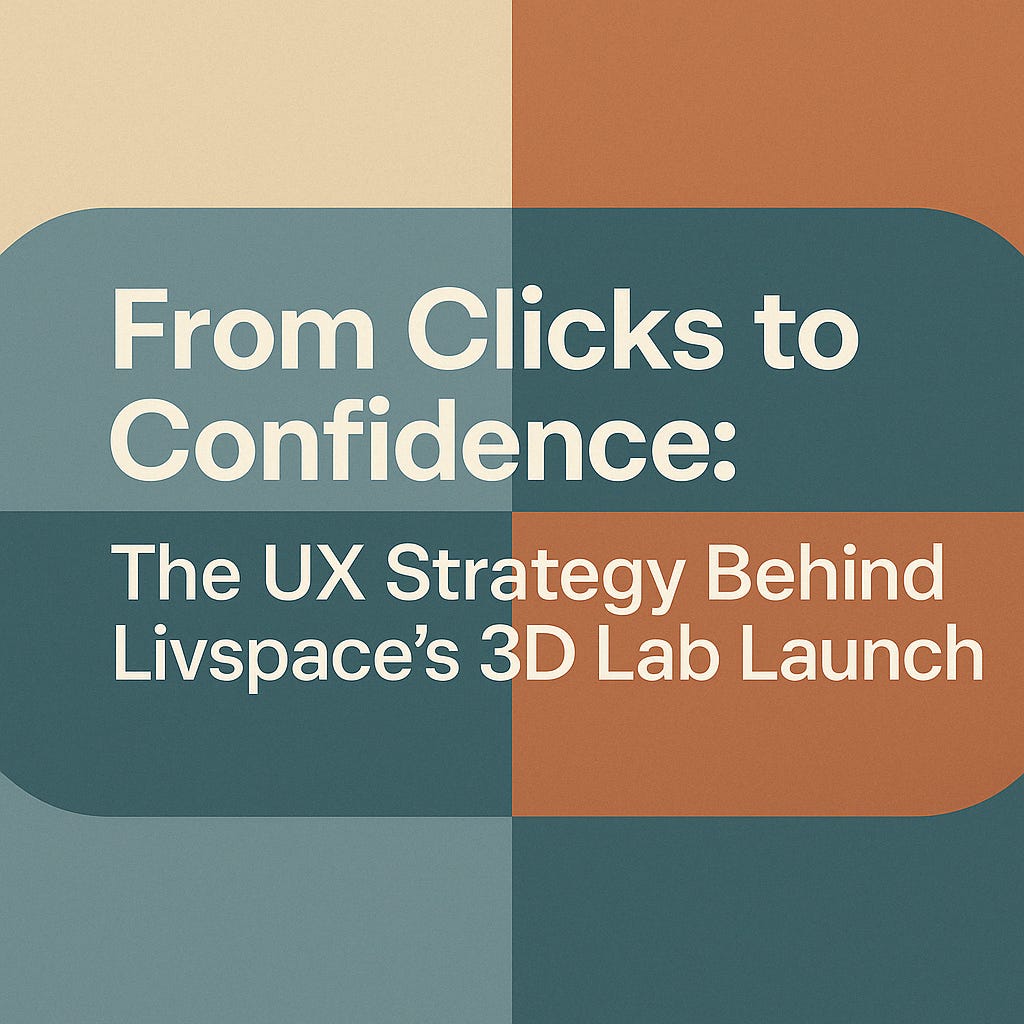From Clicks to Confidence: The UX Strategy Behind Livspace’s 3D Lab Launch
How we used real feedback, user segmentation, and pilot metrics to launch Livspace’s 3D Lab right.
Too often, products are launched by engineers, then debugged by users. At Livspace, we didn’t want to wait for complaints to tell us what wasn’t working.
With the 3D Lab—a high-fidelity visualization tool built to render photorealistic interiors—we knew that engineering excellence alone wouldn’t guarantee adoption. What looks intuitive in development often breaks down in the hands of real users. That’s where UX strategy became our safety net and superpower.
The Gaps We Planned For
One consistent challenge in product development is the gap between how a product is designed and how it's actually used. Engineers may follow flawless logic, but users rarely behave in predictable patterns. Instead of relying on assumptions, we decided to build around proof.
Before piloting even a limited rollout, we conducted structured UX testing and UAT sessions. These weren't just checkbox exercises—they were active learning moments.
Each session paired a user with a researcher on a live call. Yes, we had scripted flows to ensure key functionalities were covered, but we intentionally left room for free navigation. Giving users freedom to explore, while also observing their task completion. We captured unfiltered reactions and discovered blind spots we hadn’t anticipated.
Designing for Every Type of User
Not all users think alike, and we didn't want feedback skewed by a single demographic. We deliberately segmented our testers:
Innovators: Technically advanced users who push tools to the edge
Early Adopters: Enthusiastic users who care about speed and efficiency
Laggards: Less tech-fluent users who surface hidden usability flaws
I’ll talk more about this segmentation in upcoming articles.
This segmentation was critical. It gave us contrasting feedback loops and made sure we weren’t optimizing for just the power user or the lowest common denominator—we were designing for both.
One insight that shaped our decisions was how users moved through the platform to reach the end goal—creating a photorealistic 3D output. By tracking click paths, drop-off points, and areas of confusion, we identified what needed streamlining and where tooltips, default settings, or UI tweaks could make a difference.
How We Measured “Success”
A major internal debate was: when do we know this is ready for rollout?
We anchored our pilot evaluation to a simple but powerful user test: “How disappointed would you be if this feature were removed?”
If 40% or more of users said they’d be highly disappointed, we treated that as a signal of real product value. It became our North Star. Not usage for the sake of it, but meaningful usage—the kind that drives adoption, retention, and word-of-mouth.
It wasn't just about shipping. It was about shipping something people would miss.
Why This Approach Worked
By the time we rolled out 3D Lab more broadly, we weren’t guessing. The product wasn’t perfect, but it was grounded in reality. Every decision had been validated by real behavior, not just internal opinion.
More importantly, we gave the product the best chance to land well across user types. The innovators used it to its full extent. The early adopters moved quickly through the workflows. And even the laggards? They found their way without needing a manual.
Final Thought
Building a product is only half the job. Ensuring it’s usable, intuitive, and valuable—that’s where the real work happens.
At Livspace, we didn’t treat UX as a design afterthought. We treated it as a strategic lever. One that helped us not only launch 3D Lab, but launch it with confidence.

